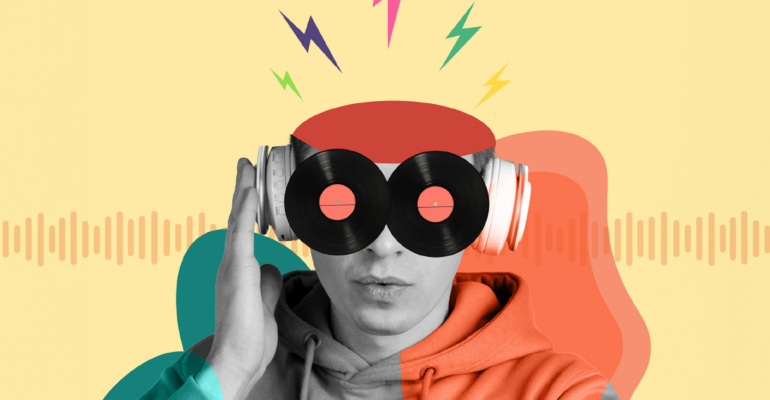The Most (and Least) Intellectual Music
The Most (and Least) Intellectual Music
What secrets do the lyrics of Billboard chart-topping songs hold about the evolution of language in music? To find out, we dug into the linguistic patterns of the songs that have defined generations, from the 1960s to the era-defining tracks of 2023. By examining the lyrics of celebrated artists across these decades, our research sheds light on popular music’s complexity, lexical diversity (the ratio of unique words to the total word count), and the recurrence of certain words (good and bad). In this article, we’ll walk you through the words that have shaped the soundtracks of our lives.
Key Takeaways
- Joy Again (66.7%), The Rare Occasions (57.7%), and Black Eyed Peas (56.2%) songs had the most lexical diversity among Billboard artists; Macklemore’s had the least (13.4%).
- Indie/alternative music is the most lexically diverse, on average (45.0%), followed by country music (42.8%) and rap/hip-hop (42.6%).
- An average of 1 in 28 words used in rap/hip-hop music is vulgar.
- Drake, Sexyy Red, and Dr. Dre use more vulgar language than any other Billboard artist we studied.
- On average, metal (1.2%), EDM (1.1%), and indie/alternative (1.1%) music contain the most complex lyrics.
Lexical Diversity in Music
Lexical diversity, the range and variety of words used in text or speech, is a powerful indicator of creativity in music. In this section, we’ll reveal how artists and genres of the Billboard songs we analyzed stack up: the higher the percentage, the more lexically diverse their lyrics are.
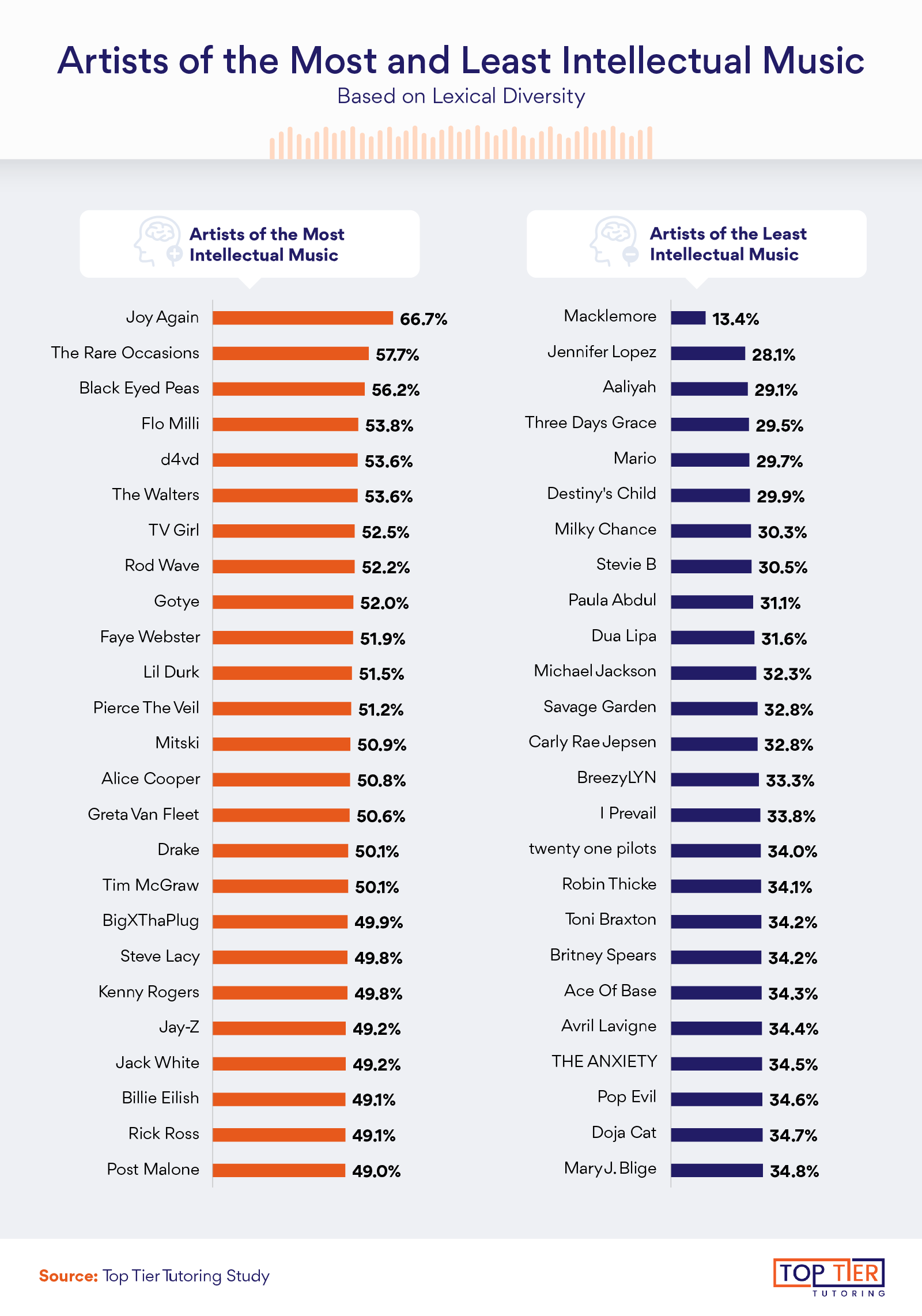
Philadelphia-based indie rock band Joy Again led with an astounding 66.7% lexical diversity. Meanwhile, Macklemore — known for the hit song “Thrift Shop” — trailed with the lowest at 13.4%. This significant variance underscores the diverse vocabulary used in music. However, pop artists like Jennifer Lopez and Aaliyah exhibited some of the lowest lexical diversity as well.
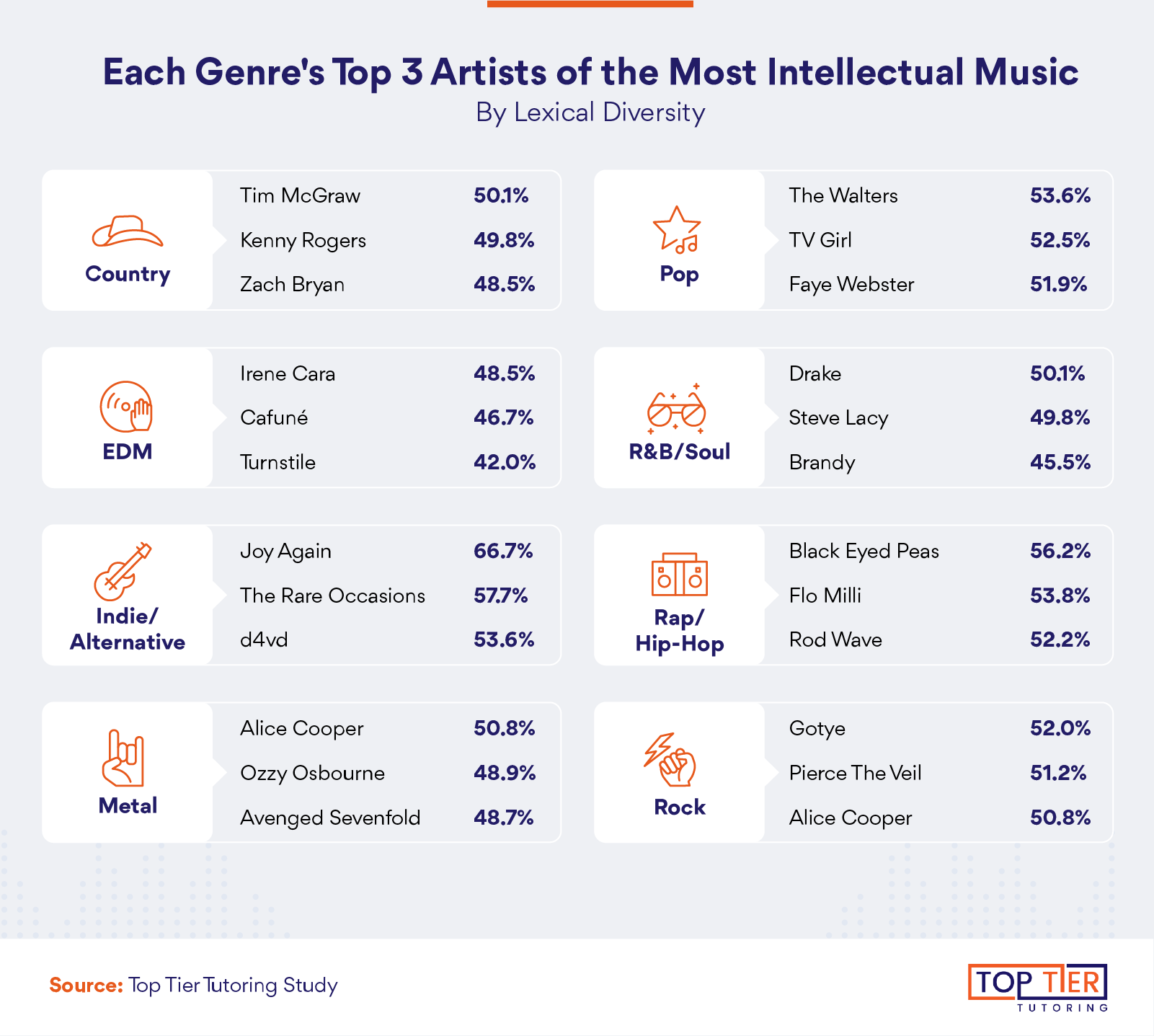
In our genre-specific analysis, The Walters and Tim McGraw represented pop and country with the most lexical diversity at 53.6% and 50.1%, respectively. Joy Again topped the indie/alternative genre with 66.7%, while Black Eyed Peas shone brightest in rap/hip-hop with 56.2%. These findings suggest a vibrant diversity in lyrics across genres, with indie/alternative emerging as the most lexically rich.
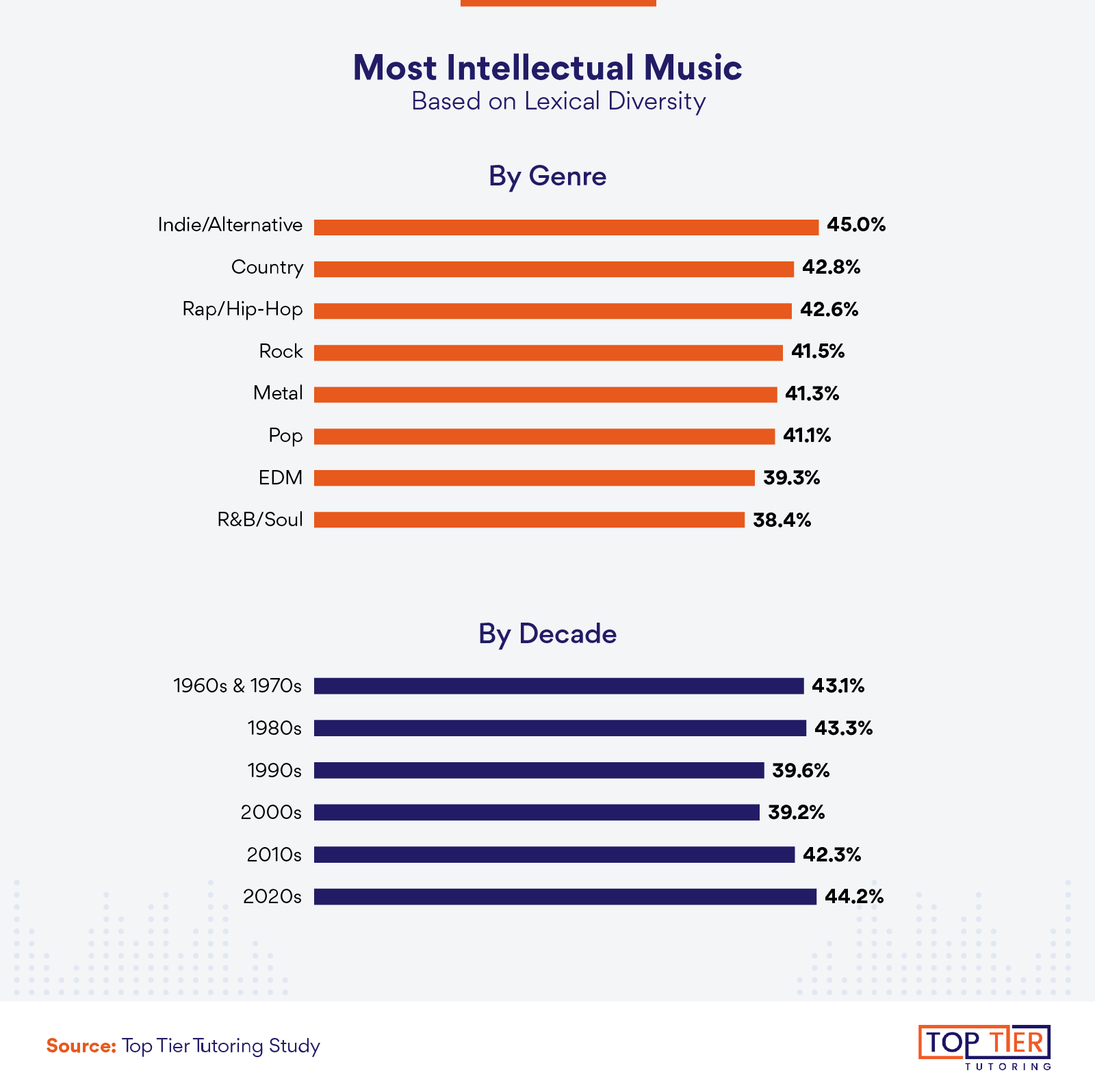
According to our statistical analysis, the 2020s and the 1980s emerged as the decades with the highest lexical diversity in music. Maybe what we loved about popular music in the ‘80s — its exuberance, melancholy, and sense of escape from the mundane — is seeing a renaissance of lyrical complexity today.
As for genres, indie/alternative music was the most lexically diverse (45.0%, on average), marking a notable trend in contemporary music creation. Next in line were country music (42.8%) and rap/hip-hop (42.6%).
Go-To Words in Song Lyrics
Next, we’ll uncover the most common words used by Billboard-topping artists and popular music genres.
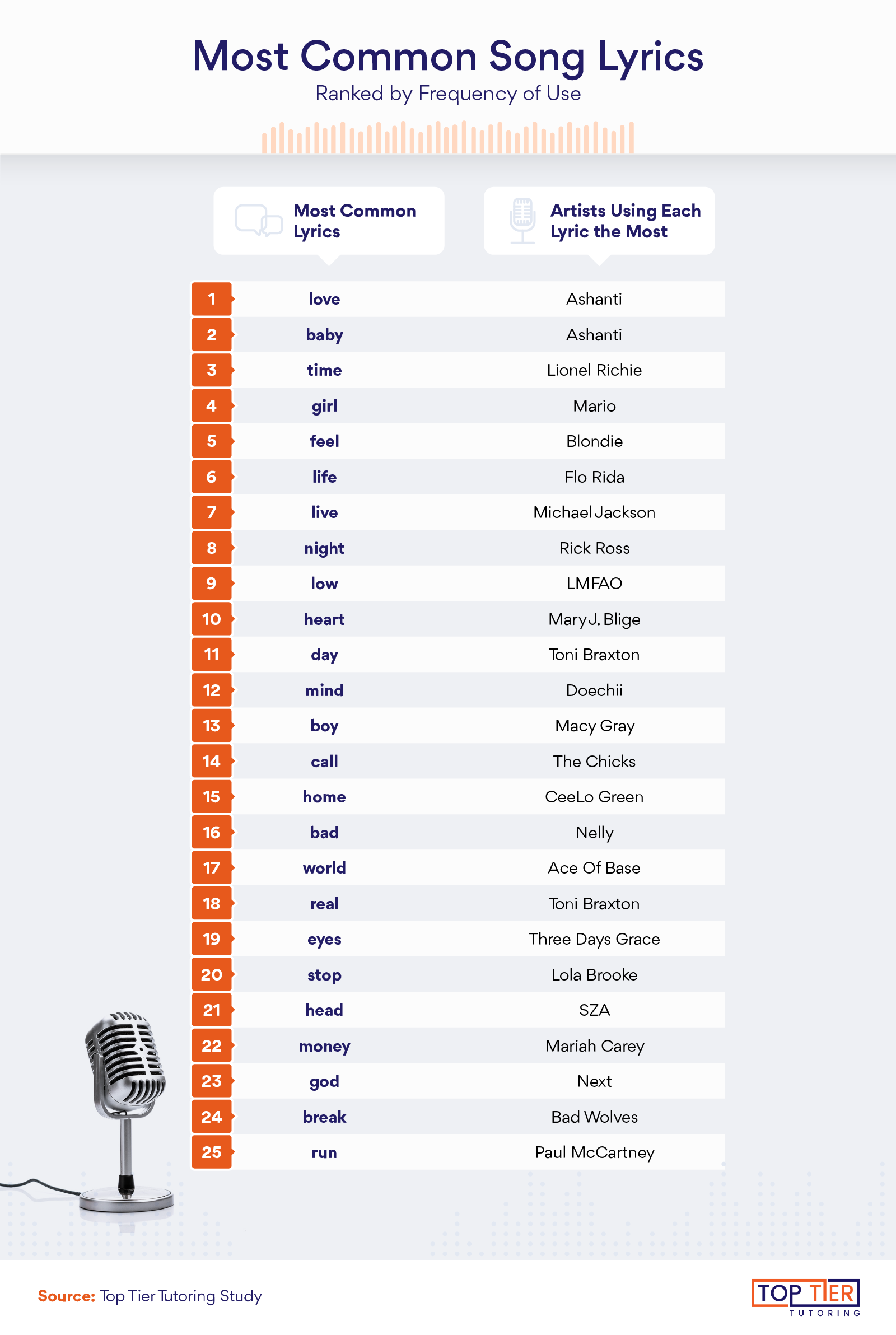
“Love,” “baby,” and “time” dominated as the most used words in music, transcending genres and eras. Ashanti and Lionel Richie most frequently incorporated these universally relatable terms in their lyrics, reflecting common themes in relationships and emotional states in songs.
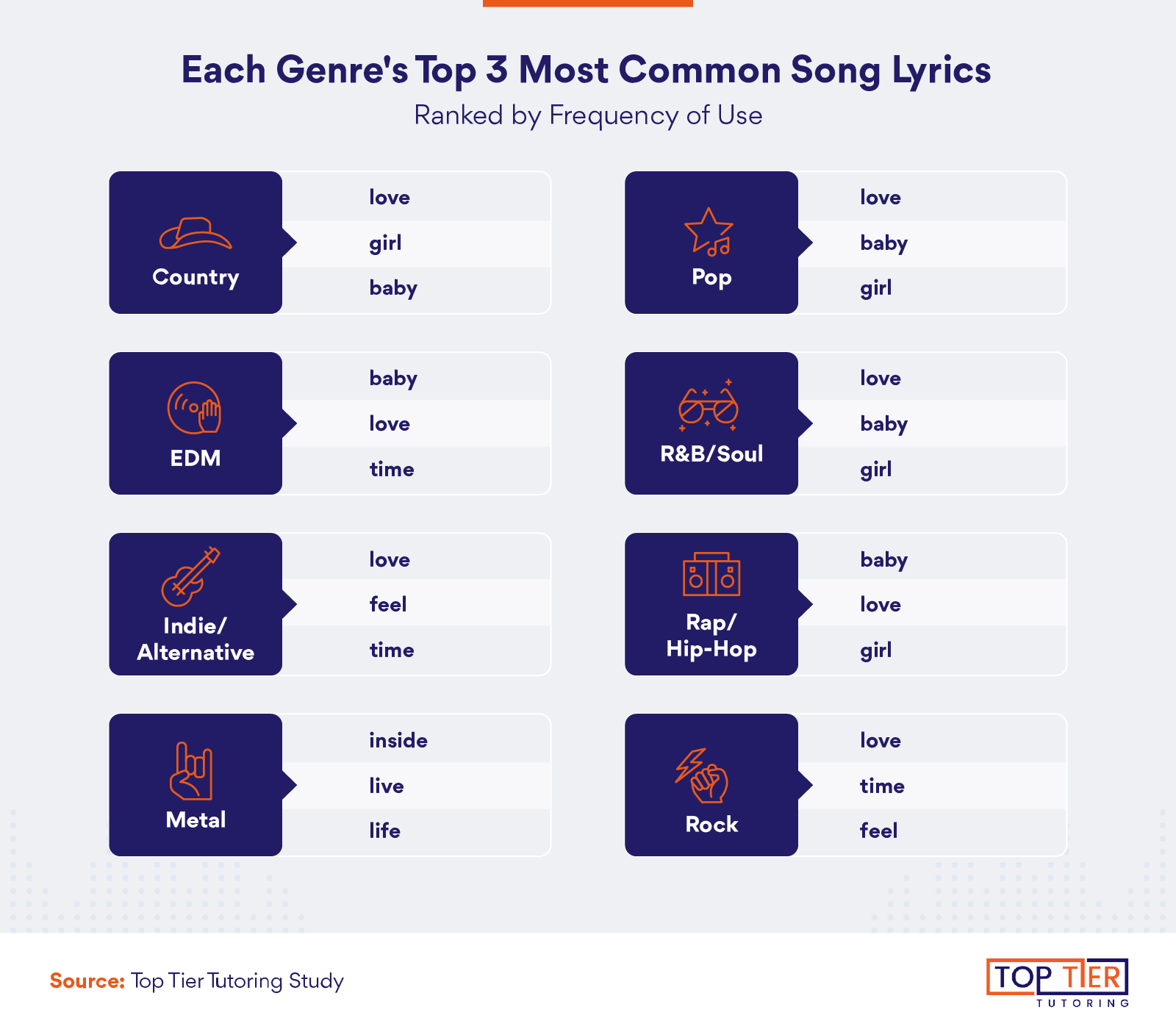
Each music genre showcased its unique linguistic character. “Love” was the most commonly used word in country, indie/alternative, pop, R&B/soul, and rock, while “baby” resonated most in EDM and rap/hip-hop. “Feel” and “time” were commonly used across various genres as well, but the top three lyrics in metal were unique to that genre — “inside,” “live,” and “life.”
Vulgar Language in Music
Not all lyrics are about nice things like “love;” some use more intense words to convey strong emotions or challenge societal norms. Let’s dig into the darker side of musical language and study artists’ raw expressions of profanity.
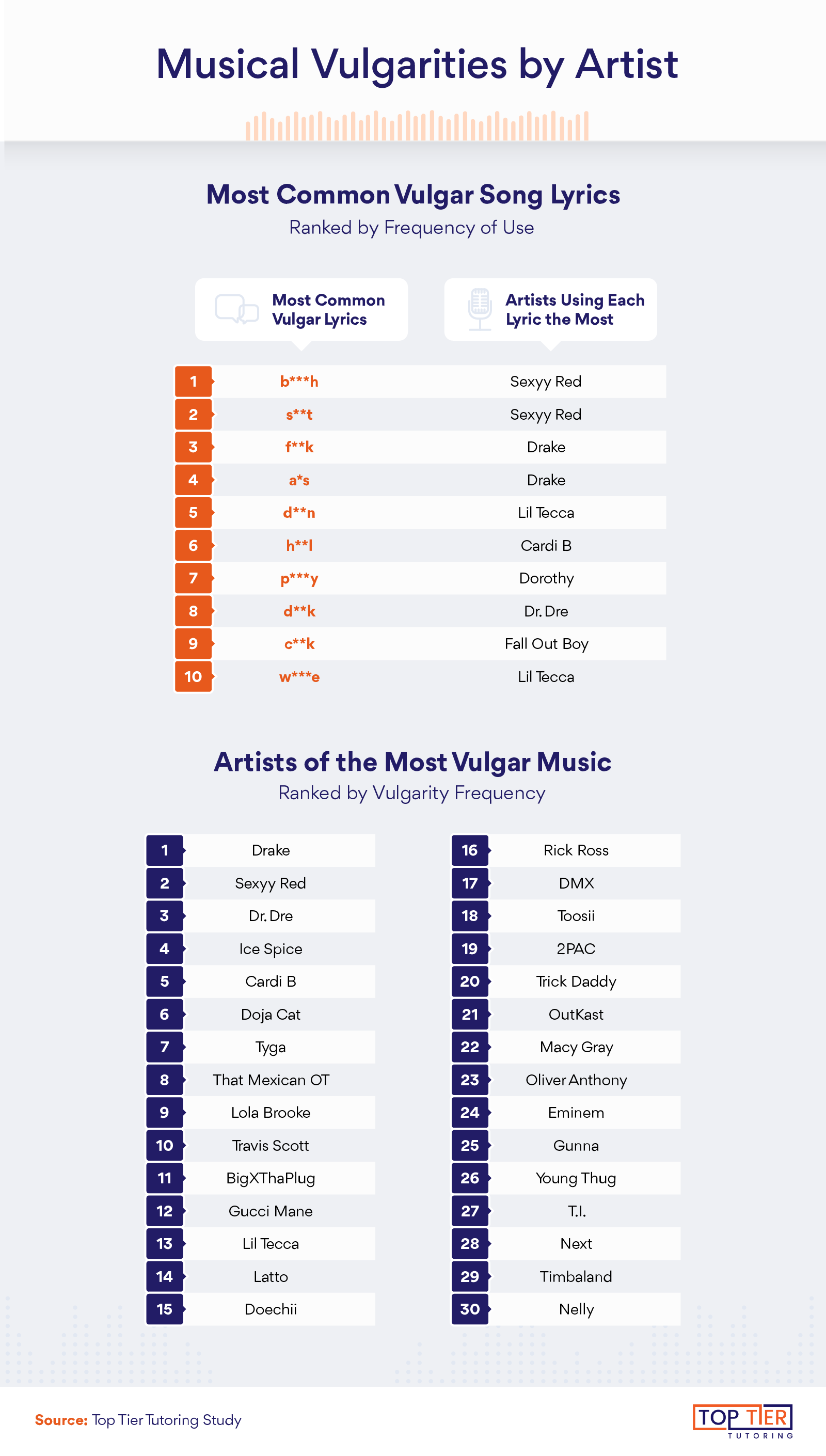
Drake, Sexyy Red, and Dr. Dre have used more of the most popular vulgar lyrics than any other Billboard artist we studied. But as far as vulgarities in general, Drake topped the list. Vulgar lyrics were especially prevalent in hip-hop/rap — nearly all the top 30 artists who most used vulgarities in their songs fell into these genres. On average, one in every 28 words written in a rap/hip-hop song was vulgar — the highest rate among all song genres we analyzed.
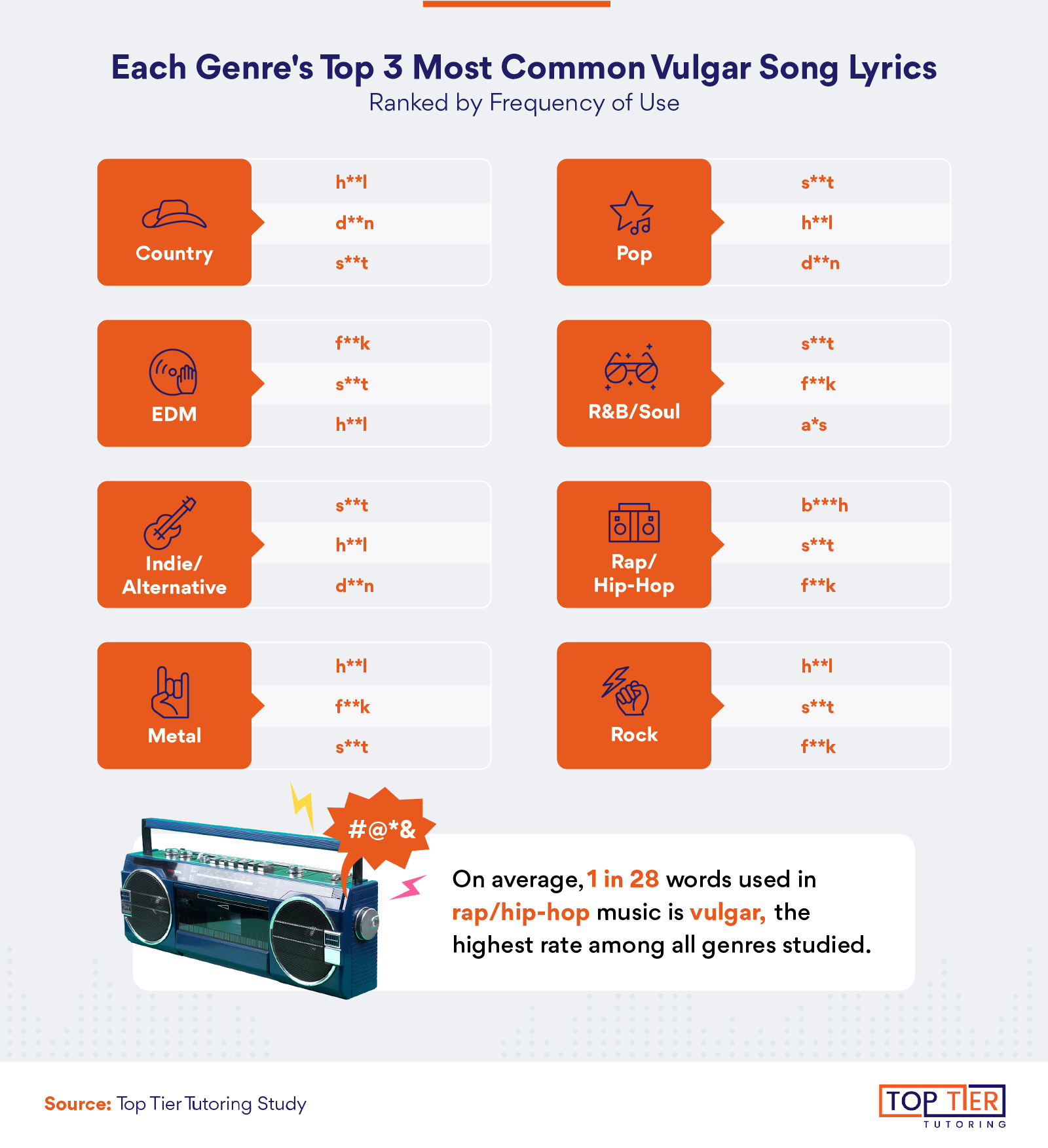
Of all the vulgarities we measured, EDM was the only genre whose songs used “f**k” most frequently. “H**l” was the most common vulgar word used in country, metal, and rock, showcasing its popularity for emotional expression. Meanwhile, pop, indie/alternative, and R&B/soul’s most common vulgarity was “s**t.”
Lyrical Complexity
Lastly, we measured the complexity of chart-topping artists and genres based on the percentage of lyrics that included words of over 12 characters.
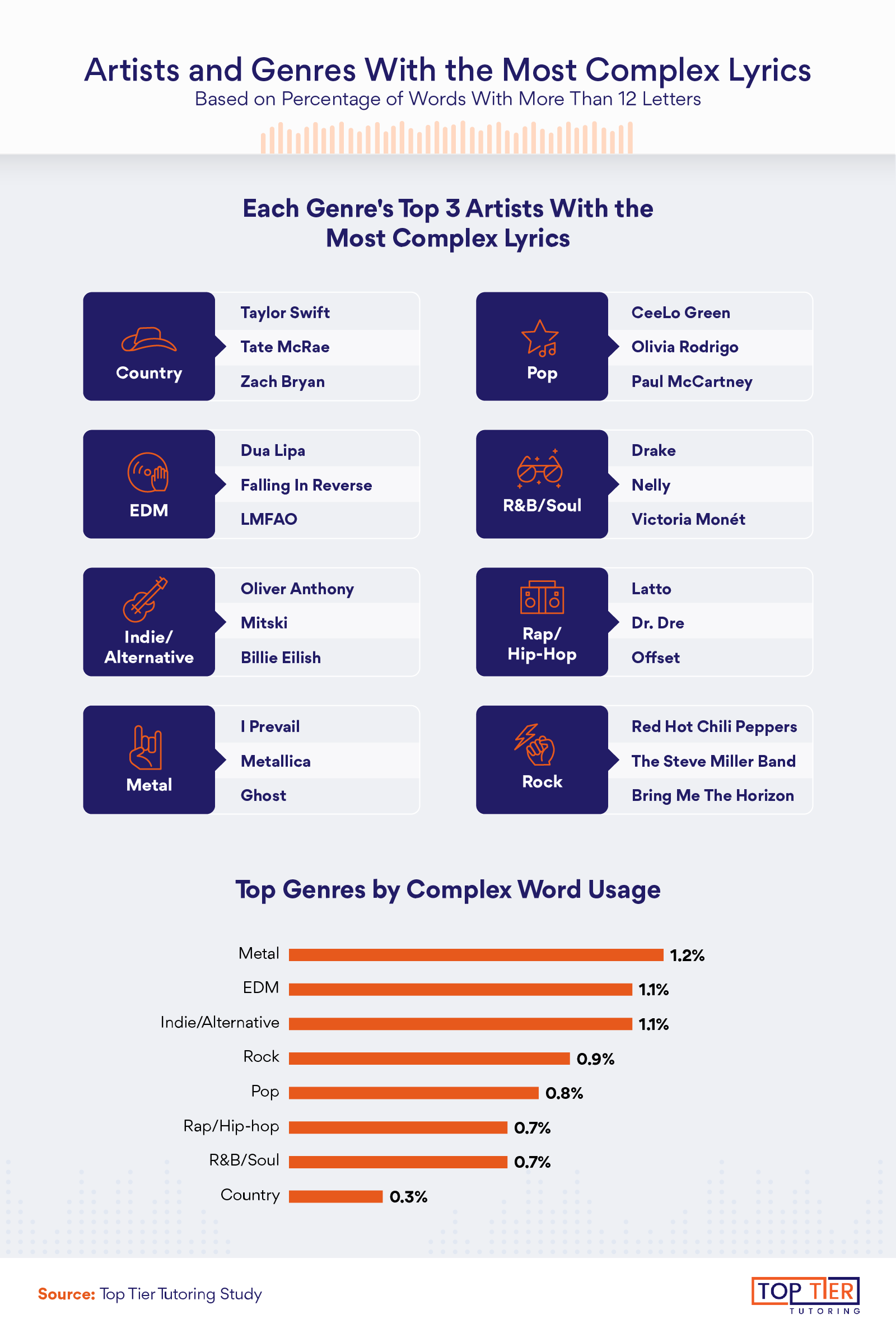
Taylor Swift reigned as the queen of complex lyrics in the country music genre. Swift’s word choices like “Machiavellian” and “incandescent” likely helped her top our charts. CeeLo Green in pop and Dua Lipa in EDM also stood out for using complex words. They shared this trait with I Prevail in metal and Latto in rap/hip-hop.
Certain genres also demonstrated a higher average use of intricate language than others, especially metal, EDM, and indie/alternative. This trend points to a rich depth of linguistic expression within these genres, offering listeners an especially layered and nuanced lyrical experience.
The Ups and Downs of Musical Language
This study reveals the fascinating evolution and diversity of language in music across genres and eras. It reflects popular music’s dynamic linguistic range, from the commonality of words like “love” and “time” to the explicitness of artists like Drake. The resurgence of lyrical complexity in recent years, especially in genres like indie/alternative and metal, points to a continued evolution of music as a powerful medium of expression. These insights also highlight the ever-changing nature of language as an art form.
Methodology
For this study, we analyzed music from artists who appeared on the 2023 Billboard charts as well as well-known artists from previous decades, including the 1960s, 1970s, 1980s, 1990s, 2000s, and 2010s. We gathered the lyrics for their most popular songs (a minimum of 10 songs each), then calculated their lyrics’ uniqueness, most used words, word complexity, and use of vulgar language. When analyzing vulgar language, we omitted racially insensitive terms.
About Top Tier Tutoring
Top Tier Tutoring enriches the academic journey of students with expert guidance in subjects such as statistics, language, and literature. Our experienced tutors help you to unravel the complexities of language, offering insights that resonate beyond the classroom.
Fair Use Statement
Keep the conversation about the evolving language of music flowing! You’re welcome to share our insights for non-commercial, educational purposes. We request that you provide proper attribution by linking back to this article, ensuring your audience has full access to our comprehensive analysis and methodology.

